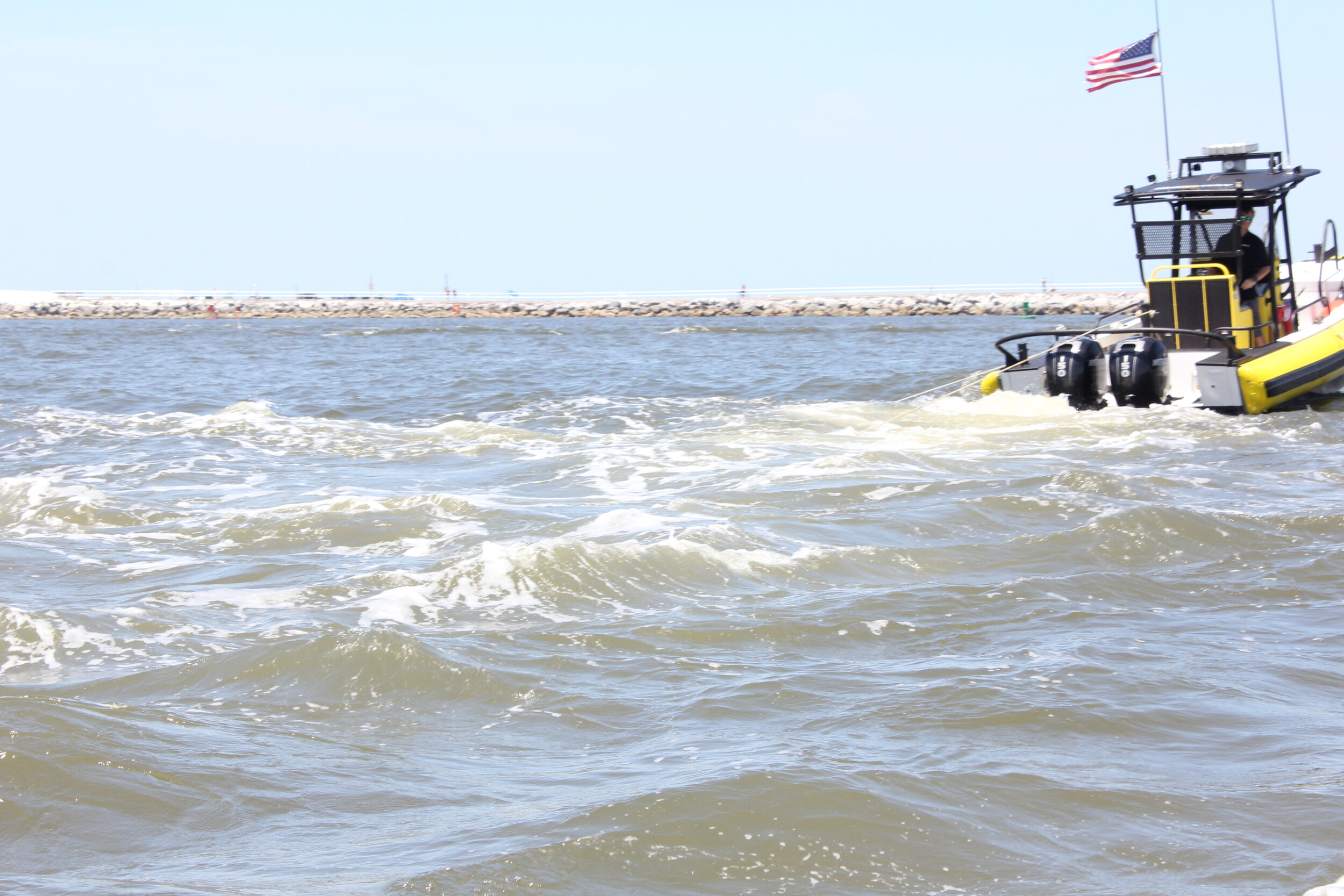First Step is Conquering Gravity Water Flow
Anchored Vessel operating as pump, 1800 rpm
While water problems are often complex, the HydroLibria (environmental balance) of a waterbody can be simplified to 4 basic terms:
(Inputs + Outputs) + Surface + Flow / Exchange.
Of those 4 factors only Flow/Exchange is simple, a factor that can be described in one or two terms like "1 Mm3/day" (1 million cubic meters per day). Flow is fundamental for our waters, the only factor which affects all other factors yet modern water management has focused on the 'Input' and 'Output' terms (nutrients, fisheries) of hydrolibria, more rarely on the 'Surface' (sediments, reefs) term, but almost never on the 'Flow/Exchange' term.
Our waters are stuck in the Stone Age, where humans were before wheel, axle and plow, subjects of natural forces like gravity flow. The Hydrolibria Revolution starts with the realization that hydraulic flows can be controlled by the aquatic equivalent of the wheel, which like it did on land, will enable a new aquatic age.
Hydrolibria is about building the infrastructure, devices and products for a new industry of direct water management, where floods are not catastrophic but created, algal blooms are managed and dead zones have come alive. The first demonstrations of this revolution will be in the Halifax and Indian Estuaries, starting at Ponce DeLeon Inlet, Florida. The Hydrolibria Consortium and the Halifax and Indian Waters Co-op have formed to create a regional system to operate the coastal waters of Brevard, Flagler and Volusia , counties on Florida’s Space Coast. This MoonShot Coast For Waters will be the first time simple machines like the wheel and wedge,operated by a waters-dedicated organization, are used to manage regional flows and exchange.
The first phase goal will be to raise $200k, which would fund:
1. Begin installing sensors and assess waterway conditions, pre-project. $50k
2. Conduct PUMP THE RIVER 2020(TM) series at Ponce Inlet in Spring 2020. To measure the ability of local vessels to respond to flood waters. Citizens and Co-op members will anchor and operate vessels over several days at Ponce DeLeon Inlet. $30k
3. Construction and operation of a 16' diameter HydroLibria(TM) flow prototype, HL16. These units use solar cells and batteries for their main power, with the disc impellers mounted on pontoons. A full-sized HL16 (~32’x14’ by 8’ draft) will pump 10-12 m3/sec using around 10 KW per hour to do it. $60k initial.
4. Development and permitting of Bridge Dolphins and Causeway Amplifiers for regional bridges and causeways. $25k
5. Development and permitting for ReefDock structures: Reef Balls and Floating Rafts beneath permitted and surveyed docks. Essentially a way dockowners can enhance their 3-D profiles, multiplying state lands while enhancing surface and wake attenuation. Seeking an initial blanket permit for the Halifax and N. Indian Waters (Ponce to Sebastian) $15k
6. While adding inlets or other ocean connections may have potential, in the Indian River Complex the only location that absolutely requires a re-connection via a manifold or canal is the Banana River to Banana Creek which was blocked by NASA in the '60s to build the Crawler Way. This task is an initial assessment of feasibility $10k
7. Develop permitting and equipment specs for low-intensity, local deposition dredging operations. Dredging should be a ~daily endeavor in any coastal water, current episodic models waste money in deployment and sediment delivery costs. $10k
Phase 1 results will be incorporated to:
1. Build flow units, both large inlet and smaller $350k
2. Install and operate waterway monitoring system. $500k
2. Building and install reef materials, bridge and causeway deflectors $1M+
3. Operations at key sites within Halifax and Indian Region. $500k+
4. Modeling of effects $60k.
5. Permitting costs for Banana Re-connection $30k
PLEASE NOTE Values given above are initial estimates only, and do not represent the final cost of any task described
Two early flow prototypes near Ponce DeLeon Inlet, circa 2000.




